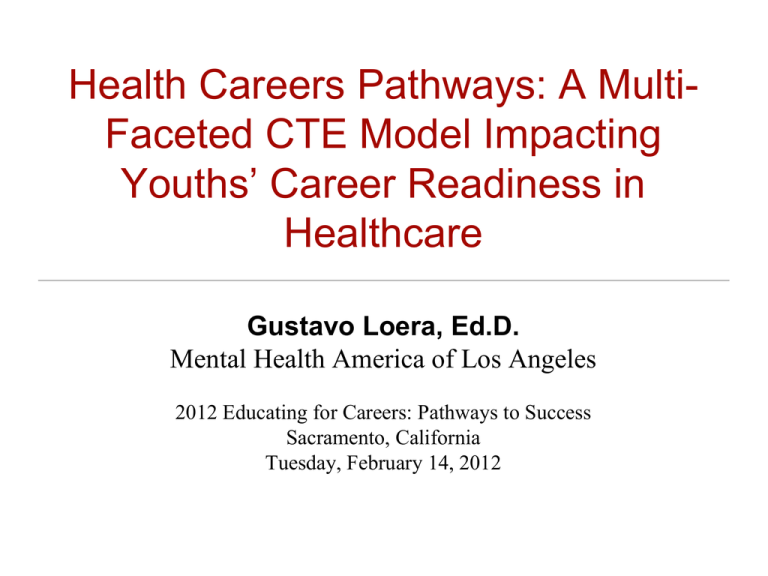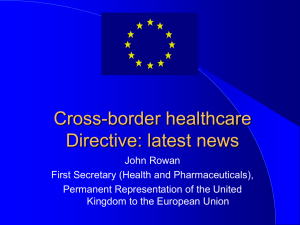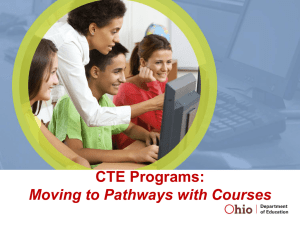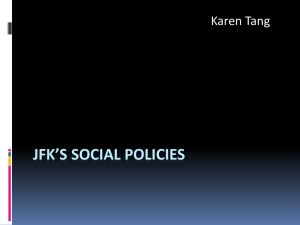powerpoint slides - 2012 Educating for Careers Conference
advertisement

Health Careers Pathways: A MultiFaceted CTE Model Impacting Youths’ Career Readiness in Healthcare Gustavo Loera, Ed.D. Mental Health America of Los Angeles 2012 Educating for Careers: Pathways to Success Sacramento, California Tuesday, February 14, 2012 What is Gap Analysis? •A systemic problem-solving approach to helping improve performance and achieve organizational goals (Clark & Estes, 2009). Why Gap Analysis? •Helps to diagnose and solve school/CTE program performance problems. Source: Adapted from Clark, 2004, p. 21. Goals for CTE students using Clark’s framework Global Goal Educational Goal Performance Goal Performance Gaps Causes of Performance Gaps By June 2012 pass all 11th grade CTE classes with a B grade or better. By December 2011 have an 90% attendance rate. By spring break 2012, have completed 90% of assignments. Dedicate 30 minutes per week modifying schedule. Sign up to attend morning tutoring 30 minutes/day. Devote 2 hrs. every day on homework assignments. Complete a minimum of 2 weekly literature reviews. Never done it. Is aware of the tutoring session, but has not signed up. Currently spends approx. 20 minutes per day. 0 literature reviews completed because no access to research articles. Knowledge gap Motivational gap Motivational gap Organizational gap Key Research Question • Did CTE students show growth on their knowledge, experience, and confidence related to healthcare careers (i.e., their healthcare career readiness)? Data: Measuring CTE’s Relevance • Design and Methods • Pre-test and post-test design (comparison group?). • Survey instrument (students and educators). • School records (e.g., transcripts, standardized tests). • Data Characteristics • CTE student characteristics. • School site/CTE program/educator characteristics. • Sample Scales Data: Measuring CTE’s Relevance (cont.) • Indicator: Knowledge and Skill • Sample questions: • Students - “How much knowledge do you have about applying and interviewing for jobs in the healthcare industry?” • Teachers - “How much knowledge do your CTE students have about applying and interviewing for jobs in the healthcare industry?” Means on the Knowledge Items Students in the Pre- and PostTest Schools Fall Item 1. How much knowledge do [you/your pathway students] have about using the skills needed for healthcare careers? 2. How much knowledge do [you/your pathway students] have about the education requirements needed for healthcare careers? 3. How much knowledge do [you/your pathway students] have about applying and interviewing for jobs in the healthcare industry? 4. How much knowledge do [you/your pathway students] have about using problem solving strategies needed for healthcare careers? Students in All Schools Educators Spring Spring Spring Mean n Mean n Mean n Mean n 2.7 1,060 3.0 991 2.9 5,362 3.2 327 2.8 1,058 3.0 990 3.1 5,335 3.3 326 2.3 1,057 2.6 989 2.7 5,329 3.0 324 2.4 1,051 2.7 987 2.7 5,330 3.0 325 Means on the Knowledge Composite Measure Data: Measuring CTE’s Relevance (cont.) • Indicator: Experience (Experiential Learning) • Sample questions: • Students - “How much experience do you have about behaving appropriately at a healthcare work site (for example, having a positive attitude, wearing proper clothing, not using slang)?” • Teachers - “How much experience do your CTE students have about behaving appropriately at a healthcare work site (for example, having a positive attitude, wearing proper clothing, not using slang)?” Means of the Experience Items Students in the Pre- and Post-Test Students in All Schools Schools Fall Item 1. How much experience do [you/your pathway students] have using the skills needed for healthcare careers? 2. How much experience do [you/your pathway students] have using problem solving strategies needed for healthcare careers? 3. How much experience do [you/your pathway students] have behaving appropriately at a healthcare work site (for example, having a positive attitude, wearing proper clothing, not using slang)? 4. How much experience do [you/your pathway students] have working in teams at a healthcare work site? 5. How much experience do [you/your pathway students] have with Health Occupations Students of America (HOSA)? Spring Spring Educators Spring Mean n Mean n Mean n Mean n 2.3 1,054 2.7 988 2.7 5,329 3.0 323 2.2 1,051 2.6 986 2.6 5,308 2.9 323 2.8 1,056 3.1 987 3.1 5,313 3.2 322 2.2 1,054 2.7 983 2.6 5,292 2.9 320 1.9 1,051 2.2 991 2.2 5,304 3.0 324 Means of the Experience Composite Measure Data: Measuring CTE’s Relevance (cont.) • Indicator: Confidence (Self-Efficacy) • Sample questions: • Students - “How much confidence do you have that you can work in teams at a healthcare work site?” • Teachers - “How much confidence do you have that you can prepare your CTE students to work in teams at healthcare work sites?” Means of the Confidence Items Students in the Pre- and Post-Test Schools Fall Item 1. How much confidence do you have that you can use the skills needed for healthcare careers? 2. How much confidence do you have that you will complete the education requirements needed for healthcare careers? 3. How much confidence do you have that you can successfully apply and interview for jobs in the healthcare industry within the next five years? 4. How much confidence do you have that you can use problem solving strategies needed for healthcare careers? 5. How much confidence do you have that you can behave appropriately at a healthcare work site (for example, having a positive attitude, wearing proper clothing, not using slang)? Students in All Schools Spring Spring Mean n Mean n Mean n 3.0 1,053 3.1 986 3.1 5,317 3.2 1,052 3.2 990 3.2 5,310 3.0 1,051 3.0 988 3.0 5,298 2.8 1,056 3.0 982 3.0 5,306 3.4 1,050 3.4 986 3.4 5,314 Means on the Confidence Items for Educators Item 1. How much confidence do you have that you can teach your pathway students the skills needed for healthcare careers? 2. How much confidence do you have that you can help your pathway students complete the education requirements needed for healthcare careers? 3. How much confidence do you have that you can prepare your pathway students to successfully apply and interview for jobs in the healthcare industry within the next five years? 4. How much confidence do you have that you can teach your pathway students problem-solving strategies needed for healthcare careers? 5. How much confidence do you have that you can prepare your pathway students to behave appropriately at healthcare work sites (for example, having a positive attitude, wearing proper clothing, not using slang)? Mean n 3.3 320 3.4 319 3.4 319 3.3 318 3.6 318 Means of the Confidence Composite Measure Means on the Knowledge, Experience, and Confidence Measures in the Fall and Spring for HSMT Students Data: Measuring CTE’s Relevance (cont.) • Other Student Indicators: • Hours of work-based learning completed. • Expectancy-value of CTE courses. • Career awareness and development activities. • School and academic engagement. Data: Measuring CTE’s Relevance (cont.) • Other Teacher/Educator Indicators: • Teacher and counselor encouragement. • Frequency in collaboration with CTE colleagues. • Curriculum alignment with: • Middle school • College/university • Industry partner Contact Information Gustavo Loera, Ed.D. gloera@mhala.org







